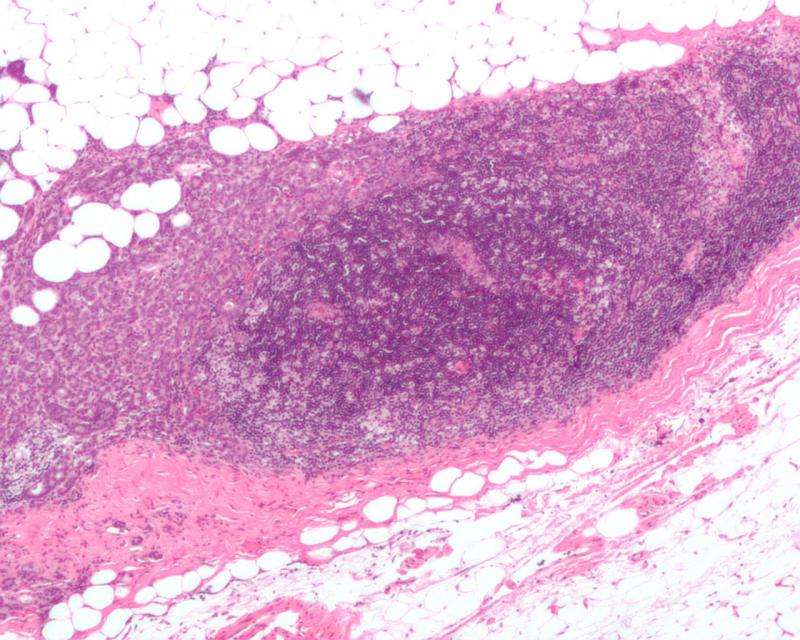Micrograph showing a lymph node invaded by ductal breast carcinoma, with extension of the tumour beyond the lymph node. Credit: Nephron/Wikipedia
Every parent knows the maxim "feed a cold, starve a fever." In cancer, however, exactly how to feed or starve a tumor has not been easy to determine.
A study led by scientists at The University of Texas MD Anderson Cancer Center has shown that a simple molecule called 14-3-3 sigma could be one answer for explaining cancer metabolism, the chemical process by which a tumor forms, grows or dies.
"We know that all cancers grow by learning how to reprogram their metabolism," said Mong-Hong Lee, Ph.D., professor of Molecular and Cellular Oncology. "But exactly how this occurs has not been fully understood. Our study showed that 14-3-3 sigma opposes and reverses tumor-promoting metabolic programs."
Lee's study results, which appear in the July 16, 2015 issue of Nature Communications, revealed new understanding about how 14-3-3 sigma - a cell cycle "controller" -regulates cancer metabolic programming, thus protecting healthy cells from turning into tumor-producing factories.
In vivo and in vitro experiments showed that, among many biochemical effects, 14-3-3 sigma suppresses cancer glycosis, which prevents cancer's ability to convert glucose into pyruvate, a substance essential for cell growth.
"14-3-3 sigma expression levels can help predict overall and recurrence-free survival rates, tumor glucose uptake, and metabolic gene expression in breast cancer patients," said Lee. "These results highlight that 14-3-3 sigma is an important regulator of tumor metabolism, and loss of 14-3-3 sigma expression is critical for cancer metabolic reprogramming."
Lee believes that the study findings provide additional insight about the "crosstalk" between cancer metabolism and cell cycle.
"We anticipate that pharmacologically elevating 14-3-3 sigma's function in tumors could be a promising direction for targeted anti-cancer metabolism therapy development in the future," he said.
Journal information: Nature Communications
Provided by University of Texas M. D. Anderson Cancer Center






















